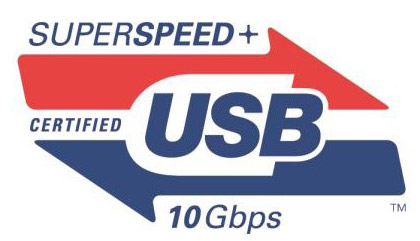

USB4
Released on Aug 29, 2019, USB4™ specification is a major update to USB technology to deliever the next-generation USB architecture that complements and builds upon the existing USB 3.2 and USB 2.0 architectures. The USB4™ archetecture is based on the Thunderbolt™ protocol specification recently contributed by Intel. It doubles the maximum aggregate bandwidth of USB and enables multiple simultaneous data and display protocols.
Key characteristics of the USB4™ solution includes:
- Two-lane operation using existing USB Type-C cables and up to 40Gbps operation over 40Gbps certified cables
- Multiple data and display protocols that efficiently share the maximum aggregate bandwidth
- Backward compatibility with USB 3.2, USB 2.0 and Thunderbolt 3
As a contributor to the development of numerous USB standards, including being one of the main authors of USB Type C locking connector specification, Newnex has been actively participating activities for USB4 standard development and is working on USB4 enabled products.


USB 3.2 Gen 2 ‒ SuperSpeed 10Gbps
First released in 2013, USB 3.1 Gen 2 is said to replace the USB 3.0 standard. The USB 3.1 standard came with two data transfer rate, 5Gbps SuperSpeed, also referred to as USB 3.1 Gen 1 and introduced a faster transfer rate called SuperSpeed 10 Gbps or SuperSpeed Plus, which increase the data signaling rate to 10 Gbps double the 5Gbps SuperSpeed, and reduced line encoding overhead to 3% by changing the encoding scheme to 128b/132b. USB 3.1 is designed to be backward compatible to all previous USB generations, USB 2.0 and 3.0.
Along with the USB 3.1 specification, a new type of USB connector end, USB C, was introduced to best support the USB 3.1 Gen 2 data rate and offered reversible plug orientation, 100W maximum PD (Power Delivery) standard and display alternate mode support. A full-featured Type-C male to male cable is also able to be reversible on host to device direction.


USB 3.0/3.2 Gen 1 ‒ SuperSpeed 5Gbps
First published in 2008, USB 3.0 offers the so called Super Speed data transmission speed up to 5 Gbps/s, which is over 10 times faster than High Speed USB2.0 (480 Mbps/sec). USB 3.0 significantly increases the data transfer throughput, power efficiency, and is backwards compatible with USB 2.0.
With the ten times faster data transfer rate and improved power delivery, more industrial applications started to adopt USB 3.0 interface, such as high speed data transfer, medical and automation imaging sensor, video conference and surveillance security cameras, etc.
Newnex has been actively participating in USB 3.0 technology development and leading the USB market by introducing a full line of innovative products.


USB 2.0 ‒ High Speed
Having been around since the mid-1990s, the Universal Serial Bus (USB) interface is one of the most successful interfaces in the history of the computer hardware. Billions of PCs and PC peripherals—such as the mouse, the keyboard, webcams, and many others—have utilized USB technology to provide reliable connections, data communication, and power charging.
Released in April 2000, the USB 2.0 specification increased the USB maximum data rate to 480 Mb/s, also known as High Speed USB data rate, in addition to the USB 1.x Full Speed data rate of 12 Mb/s. Despite the later USB generations, until today USB 2.0 still remains the most popular USB interface due to its low cost advantage and implementation easiness.
As the technology advanced and market grew, some important features of USB technology, such as Mini USB and Micro USB connector, USB On-The-Go, Battery Charging and Power Delivery was defined and included into USB 2.0 standard package.

